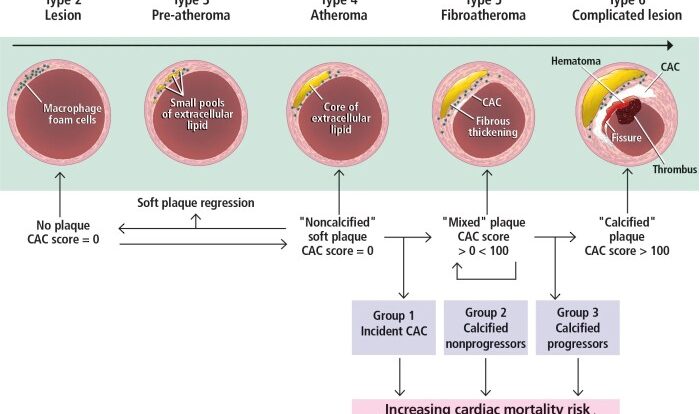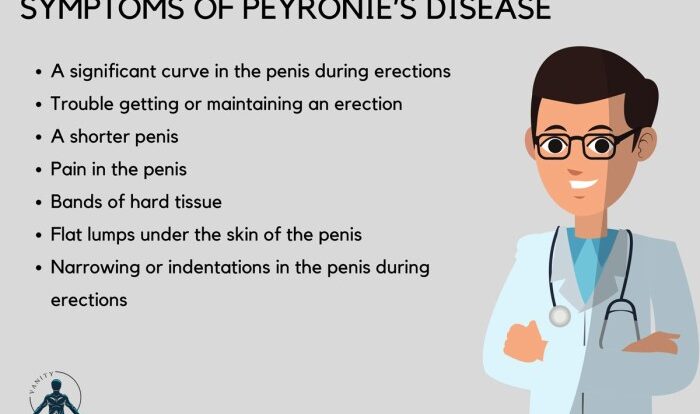Can you get a tattoo over laser tattoo removal? This question sparks a fascinating exploration into the realm of body art, where innovation meets tradition. Delving into the intricate details of laser tattoo removal and its impact on the skin, we embark on a journey to uncover the possibilities and limitations of tattooing over treated skin.
Join us as we unravel the factors that determine the feasibility of tattooing over laser-removed tattoos, examining successful and unsuccessful examples to gain insights into this intriguing practice. Along the way, we’ll explore optimal timing, design considerations, skin preparation techniques, and the crucial role of artist expertise.
Tattooing After Laser Removal
Laser tattoo removal is a popular method for fading or removing unwanted tattoos. The process involves using a high-intensity laser to break down the ink particles in the skin, causing the tattoo to gradually fade. However, laser tattoo removal can also damage the skin, making it important to consider whether it is feasible to get a tattoo over laser-treated skin.
Factors Determining Feasibility
Several factors determine whether a tattoo can be tattooed over after laser removal, including:
- Number of Laser Treatments:The more laser treatments a tattoo has undergone, the more damage to the skin and the less likely it is that a new tattoo will take.
- Laser Type:Different types of lasers can cause varying degrees of skin damage. Some lasers, such as the Q-switched Nd:YAG laser, are less damaging to the skin than others, such as the CO2 laser.
- Skin Type:People with darker skin tones may experience more skin damage from laser tattoo removal than those with lighter skin tones.
- Tattoo Size and Color:Larger and darker tattoos are more difficult to remove completely with laser tattoo removal, which can make it more challenging to tattoo over them.
Examples of Tattooing Over Laser-Treated Skin
In some cases, it is possible to get a tattoo over laser-treated skin. However, the results can vary depending on the factors discussed above. Here are some examples:
- Successful:A small, light-colored tattoo that has been removed with a few laser treatments may be able to be tattooed over with a new tattoo.
- Unsuccessful:A large, dark-colored tattoo that has been removed with multiple laser treatments may not be able to be tattooed over completely, and the new tattoo may appear faded or uneven.
It is important to consult with a qualified tattoo artist before getting a tattoo over laser-treated skin. The artist can assess the skin and determine whether it is feasible to get a new tattoo and what the results may be.
Timing and Spacing for Optimal Results
Achieving the best possible results from tattooing after laser removal requires careful timing and spacing. The key is to allow the skin sufficient time to heal and recover between laser treatments and tattooing.
The optimal time frame between laser removal sessions varies depending on the individual’s skin type and the intensity of the laser treatment. Generally, it is recommended to wait at least 4-6 weeks between sessions to allow the skin to fully recover.
Even after laser tattoo removal, getting a new tattoo over the faded ink is still possible. But if you’re wondering about the effects of smoking on egg donation, you might want to check out this article: can you be an egg donor if you smoke . Coming back to our tattoo discussion, choosing the right colors and techniques can ensure your new ink stands out, even over faded laser-treated areas.
This waiting period helps to minimize the risk of scarring and other skin complications.
When it comes to tattooing after laser removal, it is crucial to space out the treatments to allow the skin to fully heal and the ink to settle. The minimum waiting period between the last laser removal session and tattooing is typically 3-4 months.
This extended waiting period ensures that the skin has had ample time to recover and that the laser has not compromised the integrity of the skin.
It is important to note that these waiting periods are just general guidelines. The specific timing may vary depending on the individual’s skin and the specific circumstances of the laser removal and tattooing procedures. It is always advisable to consult with a qualified medical professional or experienced tattoo artist for personalized advice.
Tattoo Design and Technique
Tattooing over laser-treated skin poses unique challenges due to the altered texture and pigmentation of the treated area. Careful consideration of design and technique is crucial to achieve optimal results.
When selecting tattoo designs, it is important to choose images that will effectively conceal the remnants of the previous tattoo while complementing the surrounding skin tone. Darker, solid-color designs with bold lines work well, as they can effectively cover the faded laser-treated area.
Intricate or detailed designs may not be suitable, as they can accentuate the imperfections of the treated skin.
Tattooing Techniques
- Color Selection:Using colors that complement the skin tone and the existing laser-treated area can enhance the blending effect.
- Layering:Tattoo artists may use multiple layers of ink to gradually build up the opacity and coverage of the new tattoo.
- Depth and Pressure:Tattooing over laser-treated skin requires careful control of depth and pressure to avoid damaging the underlying scar tissue.
- Multiple Sessions:In some cases, multiple tattooing sessions may be necessary to achieve the desired level of coverage and ensure the longevity of the new tattoo.
Skin Health and Preparation
Maintaining healthy skin is crucial for both laser tattoo removal and tattooing. Proper preparation ensures optimal results and minimizes potential complications.
Pre-Treatment Skin Care
- Moisturize regularly:Hydrated skin is less prone to irritation and scarring.
- Exfoliate gently:Remove dead skin cells to enhance laser penetration and tattoo ink absorption.
- Avoid sun exposure:UV rays can damage the skin and interfere with the effectiveness of laser treatment.
- Discontinue certain medications:Blood thinners and antibiotics can affect the healing process.
Post-Treatment Skin Care
- Keep the area clean:Wash gently with antibacterial soap and pat dry.
- Moisturize frequently:Apply fragrance-free, hypoallergenic moisturizers to soothe and protect the skin.
- Avoid picking or scratching:This can cause infection and scarring.
- Protect from sun exposure:Use sunscreen with SPF 30 or higher to prevent hyperpigmentation.
Potential Skin Reactions and Complications
- Redness and swelling:Common side effects of both procedures that usually subside within a few days.
- Blistering:Can occur if the skin is overexposed to laser energy or tattooed while still healing.
- Infection:Rare but possible if the area is not kept clean or if the immune system is compromised.
- Scarring:Can occur in rare cases if the skin is damaged during either procedure.
Artist Expertise and Consultation

Choosing the right tattoo artist is crucial for successful tattooing over laser-removed tattoos. An experienced and skilled artist can assess the tattoo’s fading and skin condition, and determine if tattooing is feasible.
Consultation is essential to discuss the desired design, placement, and feasibility. The artist should provide realistic expectations and explain the limitations and potential risks.
Finding a Reputable Artist
- Check portfolios:Examine the artist’s portfolio to assess their style and technical abilities.
- Read reviews:Look for positive reviews and testimonials from previous clients.
- Ask for recommendations:Ask friends, family, or other tattoo enthusiasts for recommendations.
- Visit the studio:Visit the tattoo studio in person to observe the cleanliness, professionalism, and overall atmosphere.
Post-Procedure Care and Expectations
After getting a tattoo over laser-treated skin, proper care and aftercare are crucial for optimal healing and results.
The healing process typically takes longer compared to tattoos on untreated skin, and the skin may be more sensitive. Follow these guidelines for proper aftercare:
Cleaning and Moisturizing
- Clean the tattoo gently with mild soap and water twice a day.
- Pat the tattoo dry with a clean towel.
- Apply a thin layer of fragrance-free, hypoallergenic moisturizer.
Protection and Hydration
- Keep the tattoo covered with a bandage or gauze for the first 24-48 hours.
- Avoid exposing the tattoo to direct sunlight or heat.
- Stay hydrated by drinking plenty of water.
Potential Complications
While rare, potential complications can include:
- Infection
- Scarring
- Allergic reaction
If you experience any unusual symptoms or discomfort, consult your doctor or tattoo artist immediately.
Realistic Expectations
The final appearance of the tattoo may vary slightly from the original design due to the effects of laser treatment on the skin.
- The tattoo may be less vibrant in color.
- The lines may be less crisp.
- The tattoo may have a slightly raised or textured appearance.
Discuss these potential outcomes with your tattoo artist before proceeding to ensure realistic expectations.
Comparison of Laser Tattoo Removal and Traditional Tattooing: Can You Get A Tattoo Over Laser Tattoo Removal

Laser tattoo removal and traditional tattooing are two distinct methods for creating or altering designs on the skin. Both involve using needles to inject ink, but they differ significantly in their approaches, costs, risks, and outcomes.
Laser tattoo removal uses a high-energy laser to break down the ink particles in a tattoo, allowing the body to absorb and eliminate them. Traditional tattooing, on the other hand, uses a tattoo machine to insert ink into the skin’s dermis layer.
Procedures
- Laser tattoo removal typically involves multiple sessions, with each session focusing on a specific area of the tattoo. The laser is passed over the skin, targeting the ink particles and breaking them down.
- Traditional tattooing is usually completed in one session, where the artist uses a tattoo machine to inject ink into the skin’s dermis layer, creating the desired design.
Costs
- Laser tattoo removal can be expensive, with the cost varying depending on the size, color, and age of the tattoo, as well as the number of sessions required.
- Traditional tattooing is generally less expensive than laser removal, with the cost varying based on the size and complexity of the design.
Risks
- Laser tattoo removal carries potential risks, including scarring, hypopigmentation (lightening of the skin), and hyperpigmentation (darkening of the skin). In rare cases, laser removal can also lead to allergic reactions or infections.
- Traditional tattooing also carries some risks, such as infections, allergic reactions, and scarring. However, these risks are generally lower than those associated with laser removal.
Outcomes
- Laser tattoo removal can effectively remove tattoos, but the results may vary depending on the individual’s skin type, the tattoo’s age, and the number of sessions required. Complete removal may not always be possible, and some residual fading may occur.
- Traditional tattooing results in a permanent design on the skin. The appearance of the tattoo may fade over time due to factors such as sun exposure and aging, but it will not disappear completely.
Case Studies and Success Stories
Numerous individuals have successfully tattooed over laser-removed tattoos, achieving remarkable results. Here are a few case studies to illustrate the possibilities:
Example 1: Sarah
Sarah, a 35-year-old woman, had a large, dark tattoo on her forearm that she regretted. She underwent laser tattoo removal sessions over several months, which significantly lightened the tattoo but left behind a faint Artikel.
Sarah consulted with a tattoo artist who specialized in tattooing over laser-removed tattoos. The artist used a combination of techniques, including layering and blending, to create a beautiful floral design that seamlessly covered the remaining Artikel.
Sarah was thrilled with the results, as the new tattoo effectively concealed the old one and gave her a fresh, more desirable design.
Example 2: John
John, a 40-year-old man, had a tribal tattoo on his shoulder that he wanted to remove. He chose laser tattoo removal, which successfully faded the tattoo to a light gray color.
John then worked with a tattoo artist to design a new tattoo that incorporated the faded tribal design into a larger, more elaborate composition. The artist used lighter colors and intricate linework to blend the old tattoo seamlessly into the new one.
John was delighted with the outcome, as the new tattoo not only covered the old one but also transformed it into a unique and meaningful piece of body art.
Alternative Options to Tattooing

Laser tattoo removal, while effective, may not always result in complete removal. In such cases, individuals may consider alternative methods to conceal or modify the remaining tattoo.Scarification involves creating raised or depressed scars on the skin, which can be used to camouflage the tattoo.
However, it is a permanent and invasive procedure with potential risks such as infection, scarring, and pain.Cosmetic surgery, such as excision or skin grafting, can remove the tattooed skin and replace it with healthy skin. This method is generally more expensive and invasive than other options and may result in visible scars.Skin
You can definitely get a tattoo over laser tattoo removal, but it’s important to wait until the skin has fully healed. If you’re experiencing thyroid problems, it’s best to see a doctor first to get a diagnosis and treatment plan.
You can also visit urgent care if you’re experiencing severe symptoms. Once your thyroid problems are under control, you can talk to your doctor about getting a tattoo over the laser tattoo removal area.
pigmentation treatments, such as micro-pigmentation or permanent makeup, can be used to cover up the tattoo with a similar skin tone. This method is less invasive than surgery but may require multiple sessions and may not completely conceal the tattoo.The
If you’re wondering whether you can get a tattoo over a laser tattoo removal, the answer is yes. However, if you’re curious about whether you’ve experienced a seizure during your sleep, there’s a quick quiz that can help you determine that.
After taking the quiz, you can continue exploring the possibilities of getting a tattoo over your laser tattoo removal.
effectiveness and risks of each alternative depend on the size, color, and location of the tattoo, as well as the individual’s skin type and health. It is essential to consult with a qualified professional to determine the most suitable option.
Ethical and Legal Considerations
Tattooing over laser-removed tattoos poses ethical and legal implications that require careful consideration. Tattoo artists have a responsibility to ensure the well-being of their clients and to adhere to professional standards.
Informed Consent
Tattoo artists must obtain informed consent from clients before proceeding with a tattoo over a laser-removed tattoo. This consent should include a thorough discussion of the potential risks and benefits associated with the procedure, including the possibility of scarring, pigment migration, and altered tattoo appearance.
Clients should be given ample time to consider the information provided and ask any questions they may have.
Client Well-being
Tattoo artists must prioritize the well-being of their clients. This includes assessing the client’s skin condition, medical history, and any underlying health conditions that may affect the tattooing process. Artists should not proceed with a tattoo if they believe it may compromise the client’s health or safety.
Legal Implications, Can you get a tattoo over laser tattoo removal
In some jurisdictions, there may be specific legal regulations or guidelines related to tattooing over laser-removed tattoos. Tattoo artists should familiarize themselves with these regulations and ensure compliance. Failure to do so could result in legal penalties or disciplinary action.
Professional Standards
Tattoo artists are expected to adhere to professional standards of practice. This includes maintaining a clean and sterile work environment, using appropriate equipment, and following proper aftercare instructions. By adhering to these standards, artists can minimize the risk of complications and ensure the safety and satisfaction of their clients.
Closing Notes
From the complexities of tattooing over laser-treated skin to the ethical implications and alternative options available, this comprehensive guide provides a thorough understanding of this intriguing topic. Whether you’re considering covering up a faded tattoo or simply curious about the possibilities, this discussion offers valuable insights and practical advice.
Remember, the decision of whether or not to tattoo over laser tattoo removal is a personal one, influenced by individual circumstances and preferences. By carefully weighing the factors discussed in this guide, you can make an informed choice that aligns with your desired outcome.
Essential FAQs
Is it possible to tattoo over laser tattoo removal?
Yes, tattooing over laser tattoo removal is possible, but the feasibility depends on several factors, including the extent of laser treatment, skin condition, and tattoo design.
How long should I wait after laser tattoo removal before getting a tattoo?
The ideal waiting period varies depending on the individual’s skin healing rate and the size of the treated area. Generally, it’s recommended to wait at least 6-8 weeks after the final laser session.
Can I cover up a dark tattoo with a lighter-colored tattoo?
Covering up a dark tattoo with a lighter-colored tattoo may be challenging. The laser treatment may not completely remove the dark ink, and the lighter tattoo may not fully conceal it.
What are the risks of tattooing over laser tattoo removal?
Potential risks include infection, scarring, and allergic reactions. It’s essential to choose an experienced tattoo artist and follow proper aftercare instructions to minimize these risks.
Are there any alternatives to tattooing over laser tattoo removal?
Yes, alternative options include scarification, cosmetic surgery, and skin pigmentation treatments. Each method has its own advantages and disadvantages, and the best choice depends on individual preferences and circumstances.





